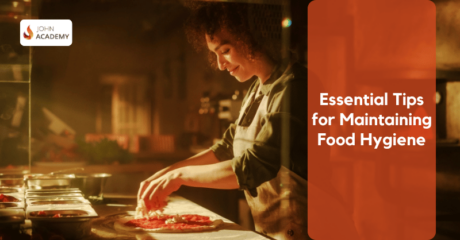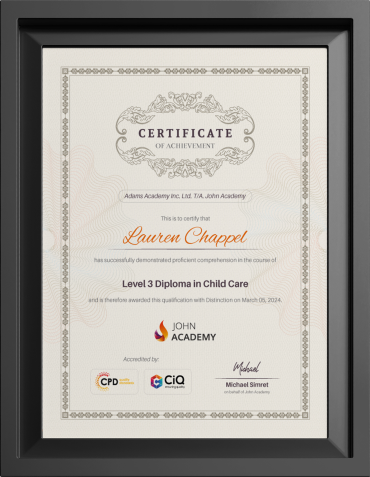

Food hygiene is a critical aspect of our daily lives. It’s the cornerstone of public health, affecting everyone from home cooks to food business operators. Yet, it’s often overlooked until a foodborne illness strikes. This can lead to severe health consequences and damage to business reputations.
Understanding and complying with food hygiene standards is not just a legal obligation. It’s a commitment to customer safety and satisfaction.
This guide provides essential tips for maintaining food hygiene. It’s designed to help you navigate the complexities of food safety, from managing food to achieving high food hygiene ratings.
Whether you’re selling food in Northern Ireland and Wales or elsewhere, these tips apply. They’re based on universal principles of food safety and hygiene. Let’s embark on this journey towards food hygiene excellence. Because everyone deserves safe, clean food.
In this Article
Understanding Food Hygiene and Its Importance
Food hygiene refers to the practices that preserve the safety and quality of food. These practices prevent food poisoning and ensure food is consumed safely. Maintaining high food hygiene standards is crucial. It impacts not only individual health but also community well-being.
Failing to follow food hygiene practices can lead to severe consequences. These include foodborne illnesses, hospitalisations, and even deaths. Food hygiene also plays a vital role in the reputation of food businesses. A single outbreak can tarnish the trust consumers have in a brand. For food business operators, understanding the importance of hygiene is paramount. It’s a key factor in the success of their operations.
Proper hygiene practices begin with understanding basic rules and guidelines. These are often established by local and international health authorities.
Key Aspects of Food Hygiene:
- Personal Hygiene: Washing hands, and wearing clean attire.
- Storage Conditions: Keeping food at safe temperatures.
- Food Preparation: Preventing cross-contamination.
- Cleaning: Regularly sanitising surfaces and equipment.
Food hygiene is not just about avoiding legal penalties. It’s about providing a safe dining experience for consumers. Also, it’s about emphasising food hygiene benefits everyone. It reduces the risk of food poisoning and supports public health.
In the food industry, a commitment to hygiene is a commitment to quality. It sets a standard that encourages consumer confidence and satisfaction.
Consequences of Poor Food Hygiene
Poor food hygiene can have dire consequences for health and businesses alike. One major risk is food poisoning, caused by harmful bacteria or viruses. This condition can range from mild discomfort to serious illness. In severe cases, food poisoning may lead to hospitalisation. For businesses, poor food hygiene can mean a loss of customers. A single incident can damage a brand’s reputation significantly.
Legal repercussions are also a possibility. Food businesses can face fines and even closure if they fail to comply. Beyond legal issues, there is a human cost. Consumers put their trust in food businesses to provide safe meals.
In Northern Ireland and Wales, food hygiene standards are strictly enforced to protect public health. Businesses failing to meet these standards face stringent penalties. Economic impacts include potential lawsuits and compensation claims from affected individuals. These can be financially devastating for small operators.
Ultimately, poor food hygiene undermines consumer confidence. It is essential for food businesses to uphold high standards in their operations.
Food Hygiene Standards and Regulations

Food hygiene standards and regulations are the backbone of a safe food supply. These guidelines help prevent contamination and ensure food quality. Each country has its own set of rules and standards. In Northern Ireland and Wales, these standards are particularly stringent.
Food business operators must familiarise themselves with local regulations. Compliance is not just a legal requirement but a moral obligation. Key regulations often include strict guidelines on food storage and preparation. Temperature control is critical in preventing bacterial growth.
Personal hygiene is another major aspect of these standards. Food handlers must wash hands regularly and wear appropriate clothing. Sanitisation of kitchen equipment and surfaces is vital. This prevents cross-contamination and ensures a clean food-handling environment.
Ensuring safe food also involves proper labelling and allergen information. Customers rely on accurate labels for their health and safety. Regular inspections by authorities ensure that standards are maintained. Non-compliance can lead to penalties or business closure.
Key aspects of food hygiene standards:
- Proper food storage techniques
- Effective temperature controls
- Regular cleanliness and sanitation
- Accurate labelling and allergen details
Meeting these standards can enhance a business’s reputation, fostering trust among consumers.
Food Hygiene Rating Scheme Explained
The food hygiene rating scheme provides a snapshot of a food business’s hygiene standards. It is crucial for both consumers and operators.
This system rates establishments on a scale, usually from zero to five. A higher score reflects better compliance with food safety standards. The ratings are based on several factors. These include how food is handled, the condition of the facilities, and food safety protocols. Local authorities inspect these elements to assign the final rating. This helps ensure consistency across different businesses.
For consumers, the scheme is a simple way to assess food safety before purchasing or dining. High ratings can attract more customers and enhance business success. Operators should aim for high ratings to signify reliable hygiene practices. Regular training and adherence to hygiene principles can help achieve this. Displaying the rating publicly is often required, reinforcing transparency and accountability.
Role of Local Authorities in Food Safety
Local authorities play a critical role in upholding food safety. They are responsible for enforcing hygiene standards and conducting inspections. These inspections ensure that businesses comply with legal regulations.
Authorities assess the hygiene practices and facilities of food businesses. By providing resources and guidance, they help operators maintain high food safety standards. This support is vital for business owners to understand complex regulations.
In cases of non-compliance, local authorities have the power to take corrective measures. They can impose penalties or close non-compliant establishments if needed. Ultimately, their role helps protect public health, boosting consumer confidence in the food industry.
Complying with Food Hygiene Regulations: A Guide for Food Business Operators
Adhering to food hygiene regulations is crucial for food business operators. It’s important for preventing foodborne illnesses and maintaining a positive reputation.
- Operators should start by thoroughly understanding the relevant regulations. This includes national and local food safety laws.
- Documentation is key. Keeping accurate records of food safety practices helps in compliance and during inspections.
- Operators must ensure that all staff are trained in hygiene practices. This involves regular workshops and practical training sessions.
- Conducting regular audits of your facility will help identify potential risks. It also ensures ongoing adherence to safety standards.
- Sanitation should be a priority. Implement robust cleaning and sanitising protocols for equipment and workspaces.
- Pay special attention to critical control points in food preparation. Address these points to prevent contamination.
- Temperature control is essential. It ensures food is stored, cooked, and served safely.
- Implement a Hazard Analysis and Critical Control Points (HACCP) system. This systematic approach can significantly enhance food safety.
- Regular communication with local authorities can aid compliance. They provide valuable feedback and updates on regulatory changes.
Essential Steps for Compliance:
- Understand applicable regulations
- Maintain thorough documentation
- Train staff in food hygiene
- Conduct regular facility audits
- Prioritise sanitation measures

You can also check out Safer food, better business practices for Food safety management procedures.
With these strategies, operators can effectively manage food safety and enhance public trust in their business.
Managing Food Safely: From Storage to Serving
Managing food involves several steps, each critical to maintaining hygiene. Proper handling starts with understanding how to store food safely.
- Organising storage areas is fundamental. Ensure perishable goods are refrigerated promptly to prevent spoilage.
- Use clear labels on all food items. This helps in managing food by tracking expiry dates and reducing waste.
- Separate raw and ready-to-eat foods. This avoids cross-contamination, which is a major food safety concern.
- Rotation of stock is essential. Employ the first-in, first-out (FIFO) method to keep inventory fresh.
- Sanitise kitchen tools and surfaces regularly. Contaminated utensils can easily spread bacteria to food.
- Pay attention to hand hygiene. Employees should wash their hands thoroughly before and after handling food.
- Serving food also requires careful handling. Ensure that serving temperatures are optimal for food safety.
- Train staff to spot signs of spoilage or contamination. Early detection can prevent food poisoning incidents.
- Regular monitoring and adjustments to procedures ensure ongoing compliance with food hygiene standards.
Key Practices for Safe Food Management:
- Organise and label storage
- Separate raw and cooked food
- Rotate stock with FIFO
- Sanitise tools and surfaces
- Train staff on spoilage signs
Preventing Cross-Contamination
Cross-contamination is one of the leading causes of foodborne illnesses. Using different cutting boards for raw and cooked items can help minimise risks. Thoroughly clean surfaces after preparing raw food. This should be a routine practice in every kitchen.
Utilise colour-coded tools. These assist in easily identifying utensils for different food types, reducing errors. Store raw meats separately. Ensure they are on lower shelves to avoid dripping on other foods. Finally, educate staff about proper hygiene. Proper training is the first defence against contamination.
Temperature Control and Safe Cooking Practices
Temperature control is vital in preventing foodborne illnesses. Cold storage should always be monitored to ensure safe temperatures.
- Perishable items need refrigeration at temperatures below 5°C. This slows bacterial growth significantly.
- Cooking food to the right temperature is equally crucial. Use a food thermometer to ensure food reaches safe internal temperatures.
- Avoid leaving cooked food out for prolonged periods. This prevents bacteria from multiplying.
- For reheating, ensure food is heated to at least 75°C. This step is essential for eliminating potential pathogens.
- Cool hot foods quickly by dividing them into smaller portions. This promotes rapid and even cooling.
- Educate staff on the danger zone (5°C to 60°C). Foods left in this range can develop harmful bacteria rapidly.
- Regularly calibrate and check thermometers. Accurate readings are essential for safe cooking and storage practices.

Personal Hygiene and Kitchen Sanitation
Personal hygiene is a cornerstone of food safety. It starts with handwashing, which reduces pathogen spread. Staff must wash hands thoroughly and frequently. This includes before handling food and after using the restroom.
Appropriate attire helps maintain hygiene. Encourage hairnets, clean uniforms, and gloves to minimise contamination. Also, jewellery is discouraged during food preparation. They can trap bacteria or fall into food.
Kitchen sanitation involves regular cleaning schedules. Surfaces should be cleaned after each use to prevent bacteria build-up. Sanitise high-touch areas like door handles and sink faucets. These spots often harbour germs that spread easily. And consider using eco-friendly cleaning agents. These products are effective yet gentle on kitchen surfaces.
Educating staff on the importance of sanitation keeps standards high. Here are a few helpful courses for staying informed and training employees.
Lastly, regular reminders reinforce best practices.
Training and Education for Maintaining Food Hygiene
Training is vital for effective food hygiene. Well-informed staff can prevent many food safety issues. Regular education sessions should cover core hygiene practices. Topics like cross-contamination and proper storage methods are essential.
Hands-on training ensures staff understand cleanliness standards. Demonstrations bring theory into practice, enhancing retention. Use real-life scenarios to teach problem-solving. This approach prepares employees for unexpected hygiene challenges. Continuously update training content. New information and techniques improve food safety, ensuring that staff stay informed and competent.
Responding to Food Hygiene Incidents and Complaints
When an incident occurs, prompt action is crucial. Address concerns as soon as they arise to control damage.
- Always listen to customer complaints carefully. Understanding the issue fully is the first step to finding a solution.
- Investigate the incident thoroughly. Identify any lapses in protocol or areas needing improvement.
- Implement corrective measures swiftly. Make necessary changes to prevent similar issues in the future.
- Follow up with the complainant. Keeping them informed about actions taken helps rebuild trust and maintain a positive reputation.
Achieving High Food Hygiene Ratings: Benefits and Tips
High food hygiene ratings signify exceptional standards. They enhance customer trust, improving satisfaction and retention. Achieving top ratings boosts a business’s reputation. Customers often choose establishments with higher ratings.
- Start by understanding rating criteria. Familiarise yourself with local food hygiene standards and ensure consistent compliance.
- Implement a Hazard Analysis and Critical Control Point (HACCP) system. This helps identify and manage potential risks.
- Regular staff training is vital. Ensure all employees understand and follow best practices in food hygiene.
- Keep detailed records of hygiene practices. Documentation helps demonstrate commitment to cleanliness during inspections.
- Use feedback to improve. Both customer and internal feedback can highlight areas needing attention.
- Maintain open communication with local authorities. They can provide guidance and resources to help achieve and sustain high ratings.

Preparing for a Food Hygiene Inspection
Preparation is crucial for a successful food hygiene inspection. It begins with a thorough review of all hygiene practices. Ensure your premises are clean and tidy. Inspectors will assess both cleanliness and organisation during their visit.
Train your staff to understand inspection requirements. Everyone should be well-versed in the necessary procedures and protocols. Keep up-to-date records accessible. This documentation will be reviewed to verify compliance with regulations. Conduct a self-inspection before the official one. Identify and correct any issues to demonstrate your commitment to food safety.
Leveraging Technology for Food Safety Compliance
Modern technology offers valuable tools for ensuring food safety compliance. These innovations streamline procedures and enhance accuracy.
- Digital temperature monitors are a prime example. They provide real-time data, ensuring food stays within safe temperature ranges.
- Food safety apps help track expiration dates and storage conditions. These tools alert users to potential risks before they become issues.
- Automated systems can manage hygiene schedules. They ensure cleaning tasks are completed consistently and on time.
By adopting these technologies, food businesses can enhance their compliance efforts. This proactive approach fosters a culture of safety and reliability.
Creating a Culture of Food Safety in Your Business

Creating a robust culture of food safety starts at the top. Leadership must prioritise and communicate the importance of food hygiene.
- Set clear expectations for everyone involved in food handling. Consistency is key for cultivating a safe environment.
- Engage staff through regular workshops and training sessions. Knowledge empowers employees to maintain high hygiene standards.
- Encourage open communication about food safety concerns. A transparent approach fosters trust and prompt solutions.
- Celebrate achievements in food safety and hygiene. Recognising efforts builds morale and reinforces positive practices.
Conclusion: The Continuous Journey of Food Hygiene Excellence
Maintaining food hygiene is an ongoing commitment rather than a one-time effort. Continuous improvement is crucial for ensuring safety. Food hygiene excellence leads to trust and reputation growth. It plays a critical role in customer satisfaction and loyalty.
Staying informed about evolving regulations is vital. This knowledge helps food business operators remain compliant and competitive. Regular audits and staff training are fundamental. They ensure that food safety practices are up-to-date and effective. Remember, a proactive approach to food hygiene creates safer food environments. It secures both business success and public health.
Additional Resources and Tools for Food Business Operators

Access to the right resources is essential for effective food hygiene management. Many tools can facilitate compliance and safety. Online courses provide flexible learning options for food hygiene education. They help keep staff knowledgeable and informed.
Regulatory websites offer detailed guidelines and updates. These can help operators stay compliant with changing food hygiene standards.
The following list highlights valuable resources for food business operators:
- Government Food Safety Portals: Provide regulations and best practices.
- Food Hygiene Apps: Track hygiene procedures and alerts.
- Professional Associations: Offer networking and educational opportunities.
- Webinars and Workshops: Practical sessions for skill enhancement.
Using these resources empowers business operators. They guide the development of robust food safety protocols and practices.
Read more





Master Business Leadership from Anywhere with an Online MBA




